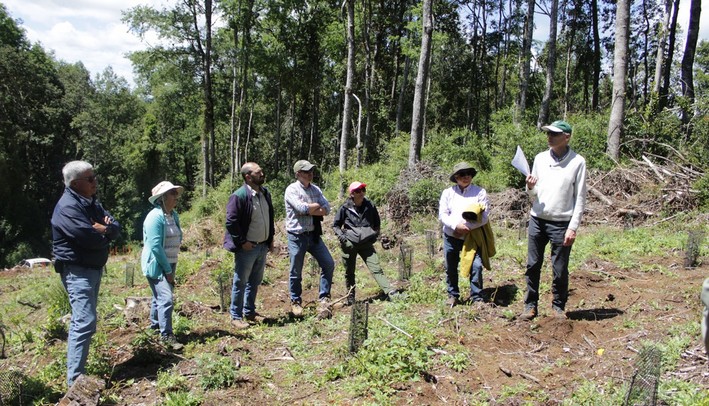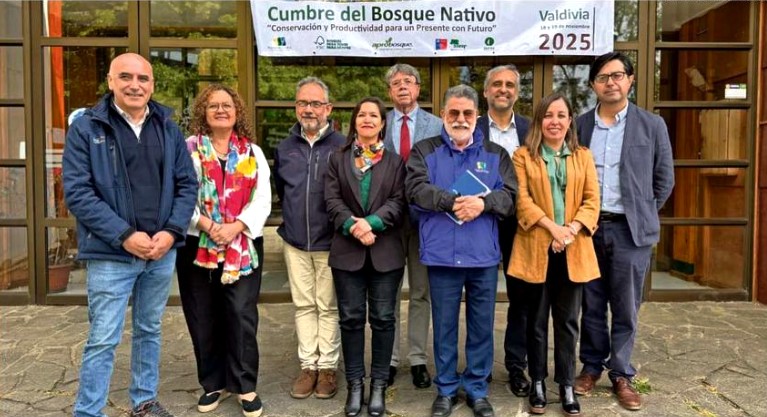9 out of 33 Municipalities in Biobío Have Yet to Submit Their Emergency Plans to Senapred
To date, in the midst of wildfire season, 9 municipalities in the Biobío Region have not submitted their Communal Emergency Plan (PCE). This is according to data from the National Disaster Prevention and Response Service (Senapred) provided to Diario Concepción.
Specifically, these are the communes of Cañete, Los Álamos, Tirúa, Cabrero, Negrete, Quilaco, San Rosendo, Antuco, and Tucapel.
It should be noted that in the case of Antuco, its plan is still being developed by a consulting firm with funding from Senapred and, according to the service, will soon undergo review.
This tool is used to organize and plan actions to be taken in case of emergencies a commune may face. Specifically, the planning document outlines responsibilities and coordination between public and private actors, as well as defining each party's roles.
In 2021, Law 21.364 was enacted, replacing the former National Emergency Office (Onemi) with the National Disaster Prevention and Response Service (Senapred) and establishing a series of obligations to prevent disaster risks and respond to emergencies.
Under this framework, related institutions, including municipalities, were required to adapt their prevention and emergency plans to current regulations. These plans take on greater relevance during the current season of heightened wildfire activity in the area.
Meanwhile, according to Senapred data, the communes in Biobío that do have updated plans are Curanilahue, Alto Biobío, Santa Bárbara, Chiguayante, Hualqui, Lota, Concepción, Penco, San Pedro de la Paz, Santa Juana, Talcahuano, and Tomé.
For Yumbel, Nacimiento, Lebu, Contulmo, Arauco, Laja, Los Ángeles, Mulchén, Quilleco, Coronel, Florida, and Hualpén, their update proposals are under review or correction.
The regional director of Senapred Biobío, Alejandro Sandoval, in conversation with Diario Concepción, emphasized that they are working continuously through various work sessions with communes that have yet to submit their respective plans.
Similarly, the Municipality of Tucapel stated they are currently working on updating the PCE with Senapred's support, holding periodic review meetings. This was explained by Juan Carlos Escobar, head of the Disaster Risk Management Unit of the municipality.
Disaster Risk Reduction
The Communal Disaster Risk Reduction Plan is an instrument of Disaster Risk Management (GRD), also in accordance with Law No. 21.364. This document aims to develop strategic actions focused on reducing territorial vulnerability, considering the main threats and risks in the commune while strengthening current system capacities.
The strategic actions defined in the plan must be consolidated through updates and specific risk studies, the inventory and implementation of structural measures to reduce physical vulnerability in buildings and critical infrastructure, raising disaster risk reduction awareness among the commune's population, strengthening communal early warning systems, and involving the private sector in the matter.
In Biobío, 18 communes have this type of updated planning: Cañete, Curanilahue, Los Álamos, Alto Biobío, Antuco, Cabrero, Mulchén, Nacimiento, Negrete, Chiguayante, Concepción, Florida, Hualpén, Penco, San Pedro de la Paz, Santa Juana, Talcahuano, and Tomé.
Similarly, the plans for Lebu, Laja, Los Ángeles, Quilleco, Coronel, and Lota are under review by Senapred. Meanwhile, Yumbel, San Rosendo, Los Ángeles, and Tirúa are in the process of drafting the document with a consulting firm, funded by the Service.
On the other hand, Arauco, Contulmo, Tirúa, Quilaco, Santa Bárbara, Tucapel, and Huaqui have not submitted a communal disaster risk reduction plan.
High Temperatures
The Biobío Region is under the highest level of meteorological alert—Red Alert—due to intense temperatures recorded and expected in some communes on Monday, January 27, Tuesday, January 28, and Wednesday, January 29, 2025.
In this context, the regional director of Senapred, Alejandro Sandoval, detailed the institutions' mechanisms for wildfire prevention and response.
"Many municipalities have convened their Cogrids and are taking preventive alert measures for the population, disseminating recommendations, and primarily using a tool that has been quite successful so far—preventive patrols with various entities present in the territories. These patrols are conducted by municipalities with CONAF support, reinforced by firefighter units, the Armed Forces in the two provinces under constitutional emergency, and police forces, including Carabineros and the Investigative Police," Sandoval said.
According to data, 617 wildfires have been recorded in Biobío this season, 16% fewer than the same period last season and 50% fewer than the five-year average. In terms of damage, 1,093 hectares have burned, 63% less than the previous year, when 2,958 hectares were affected by this date.
Source:Diario Concepción

















